Submitted Review
‘…the artist just wants a break from the dreadful weight of history…’
Julie Gough 'Truth Telling: The Crowther Reinterpretation Project'
In an interview on ABC Hobart Radio, Julie Gough noted that she makes a point of avoiding central Hobart’s Franklin Square because of the presence of a statue of William Lodewyk Crowther. Fair enough; Gough is a Tasmanian Aboriginal woman from the Briggs family of northern Lutruwita/Tasmania. Crowther was directly involved with a terrible incident wherein the remains of Tasmanian Aboriginal man, William Lanne, were horribly mutilated and parts of his body were stolen soon after he died in 1869. This is not mentioned on the plaque found on the statue of Crowther, but Tasmanian Aboriginal people are well aware of the event, and find it deeply disturbing that there’s a statue of someone that did this terrible thing to the body of an Aboriginal man that still stares down at them.
Truth Telling is a project initiated by the Hobart City Council to tell the full story and address the truth of William Lanne’s tale. The project invited artists to re-interpret the statue, and Gough is the third artist in a year-long project to do so. Previous artists have been Allan Mansell, who covered the head and hands of the Crowther statue with red latex, printed subtly with an image of William Lanne’s face; and a collaborative work from Greg Lehmann and Roger Scholes that largely ignored the statue proper, making a new monument that featured a short film, accessible by a QR code, that told of William Lanne’s life.
Gough simply did not want to look at Crowther, and she had a crate built and installed over the statue. Slabs of wood also cover the plaques on the plinths. There is effectively nothing there now, but a large crate, and Gough hopes that, given the traditional logic of what crates are for, Crowther will be removed. This is unlikely, of course, as all the works in the project are designed to, in fact, be temporary and not damage the statue (which entails a level of irony that simply must be noted, given the project’s origins), but it is certainly a fair comment from Gough that the statue has been in place for long enough.
There’s a lot of comedy in this work, comedy that sits in a close and precise tandem with justifiable anger. There’s a sense that Gough is being funny, but is also quite serious about the desire to have Crowther gone, and she has very generously done the work of packaging. As a visual moment, the work is striking: Gough has created a powerful void, and the sheer blankness of the unadorned crate has truly devoured the statue within. Gough is also quite right: the park feels more than a bit different with Crowther tucked away in a box. The absence is symbolic but it does ask what it might be like to make it more permanent.
Of course, that seems unlikely, and Gough knows this: the work is called Breathing Space, and that’s what has been created in truth: a short moment in the scheme of things, really, where Aboriginal Tasmanians simply don’t have to be reminded so directly of one terrible event, that doubtless leads to thinking of so very many more terrible historical events. That’s something that’s important about this work: it seems like the artist just wants a break from the dreadful weight of history that has crushed so many of the First Peoples of Tasmania. It’s a funny work, it really is, but it’s not a joke.
AH
Andrew Harper
Digital component of Julie Gough’s Breathing Space is accessed here.
Information on the Crowther Project.
Images: Julie Gough Breathing Space, in situ, photography by Andrew Wilson.
Digital poster image by the artist courtesy Hobart City Council.
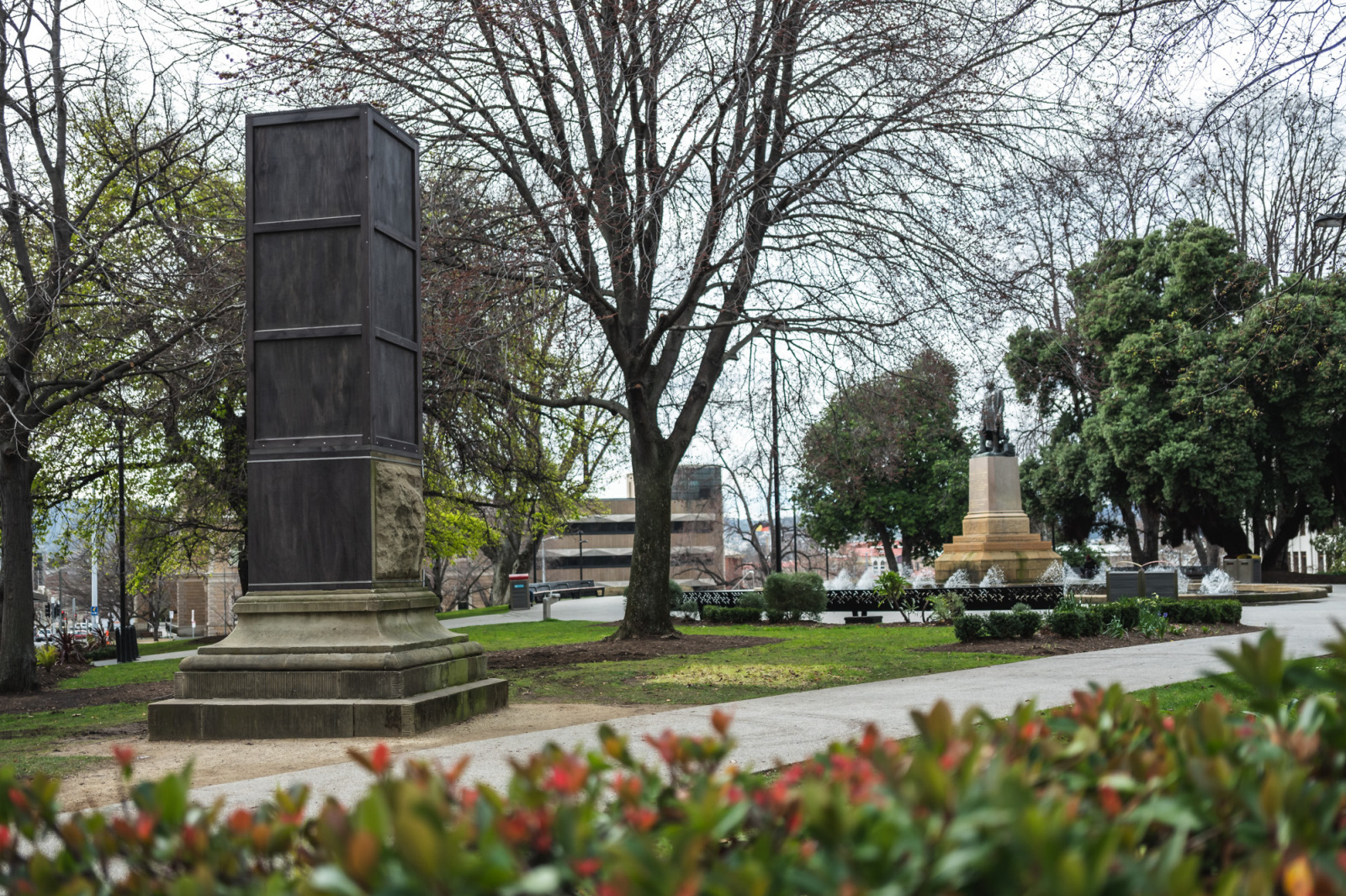
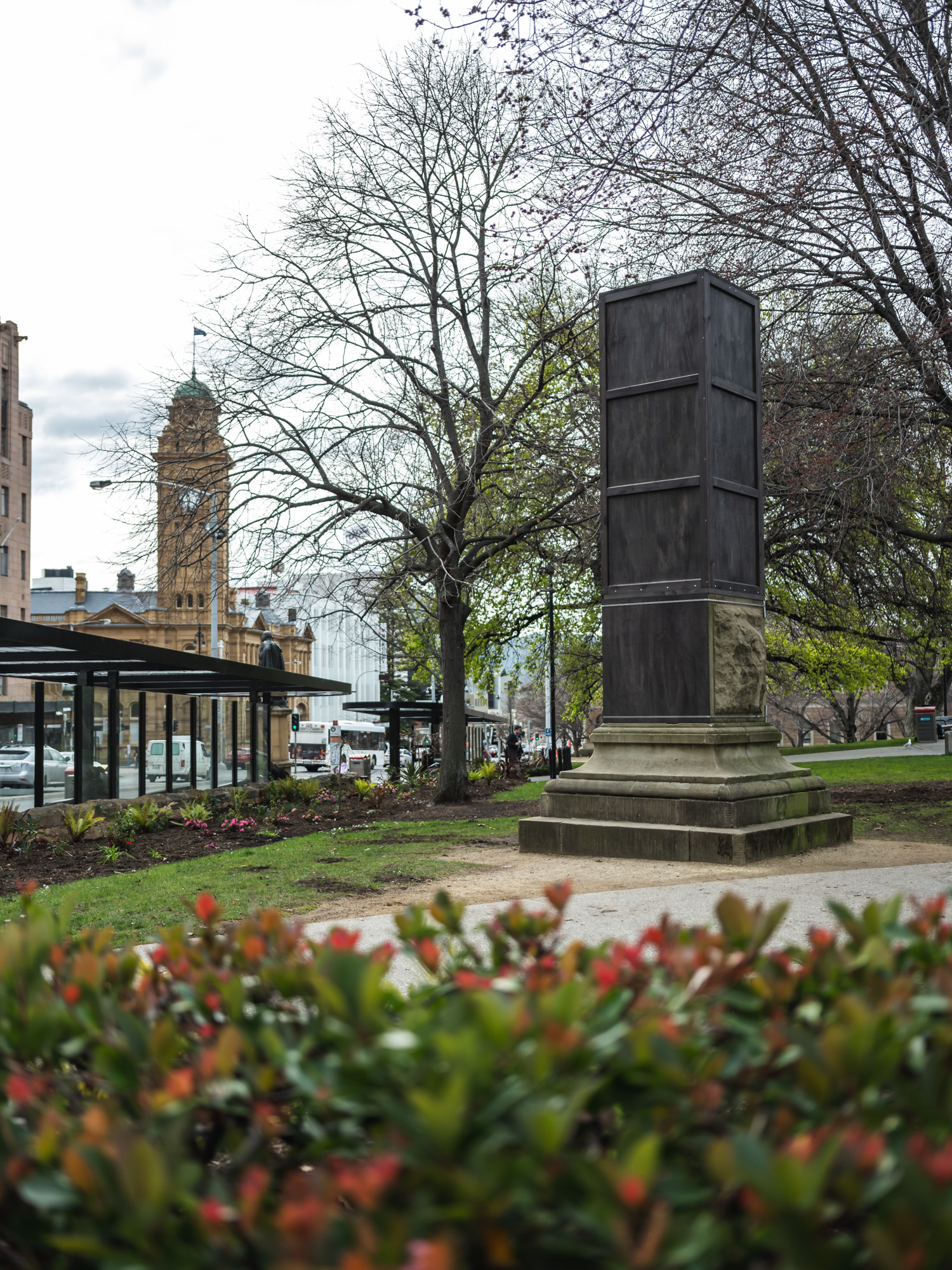
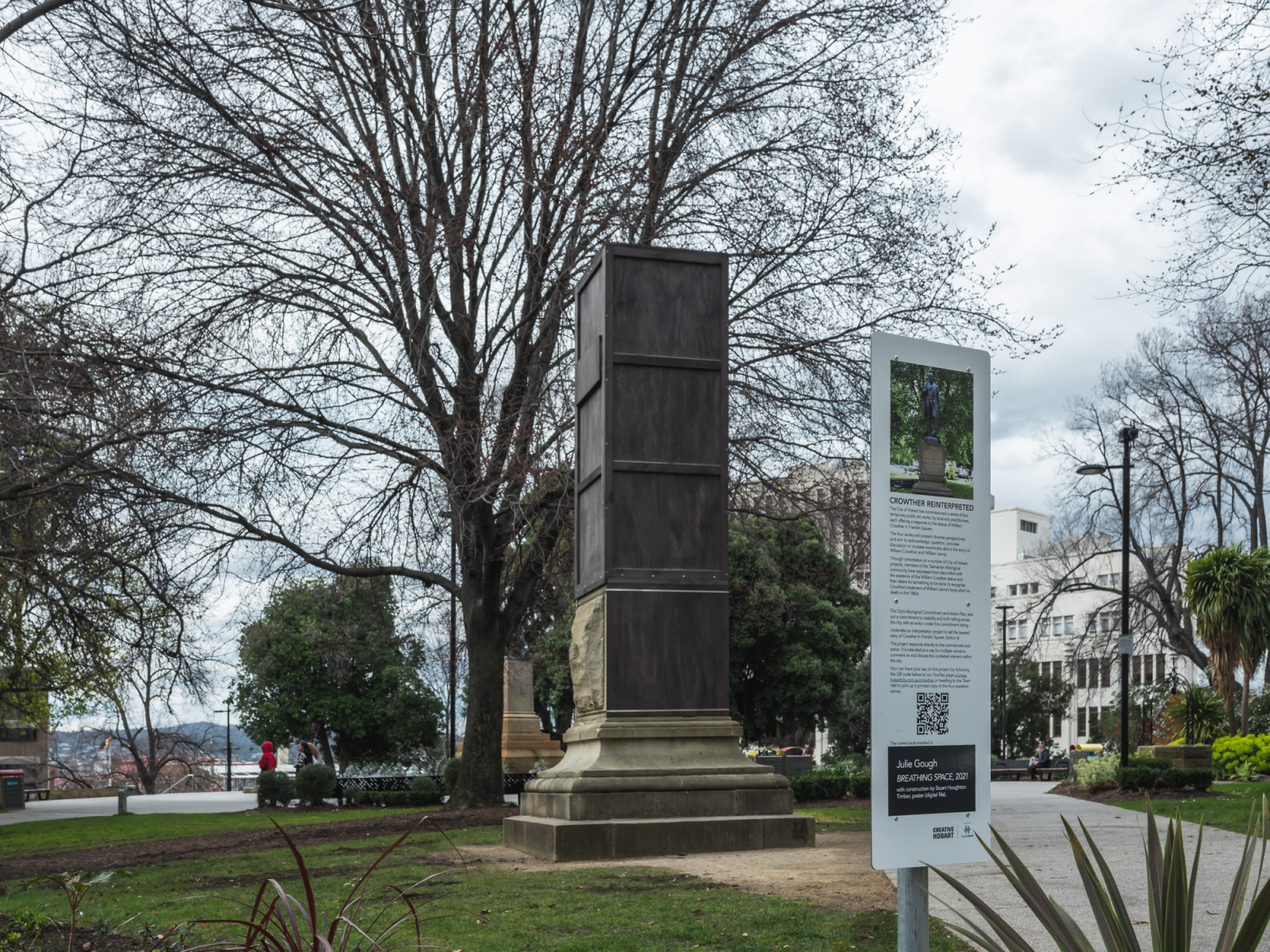
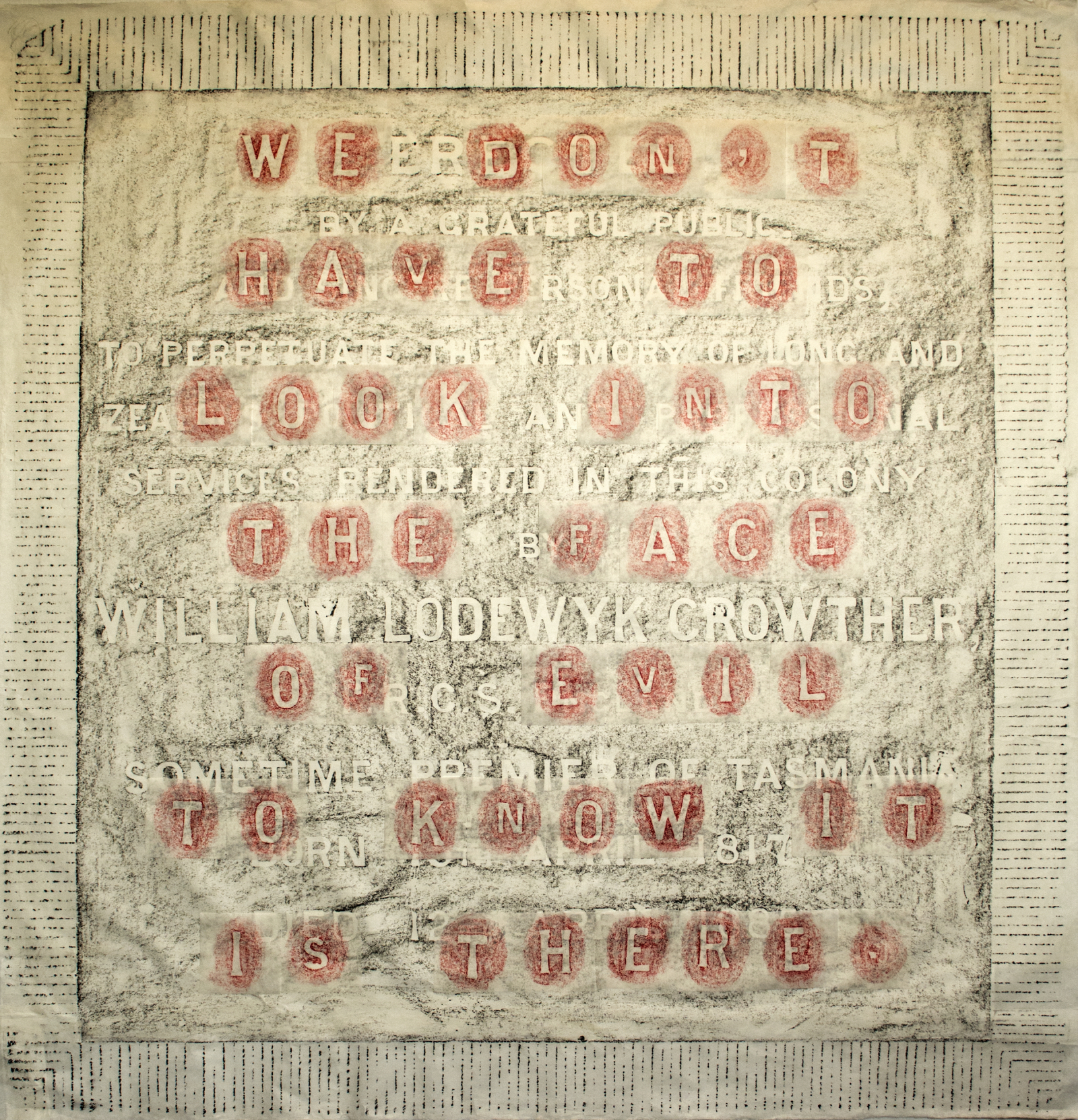
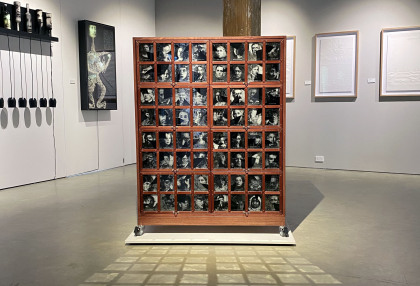
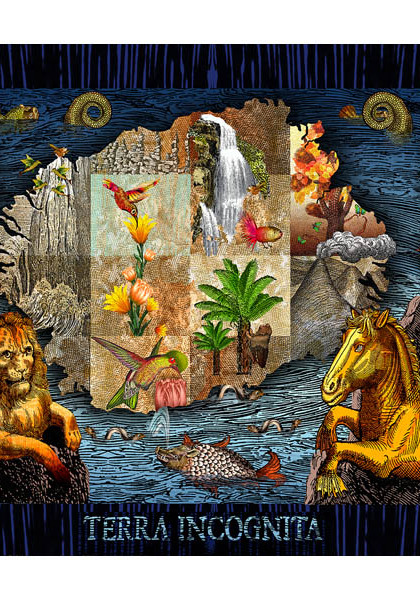
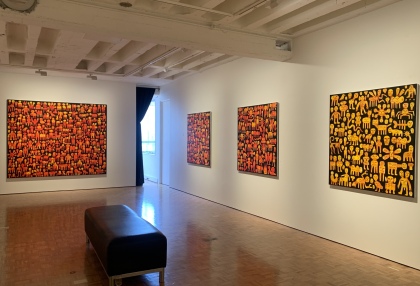
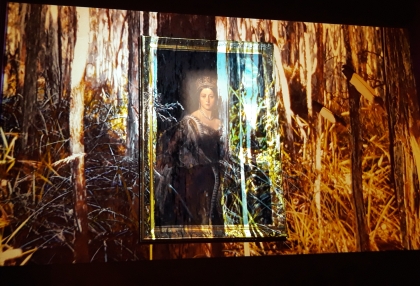
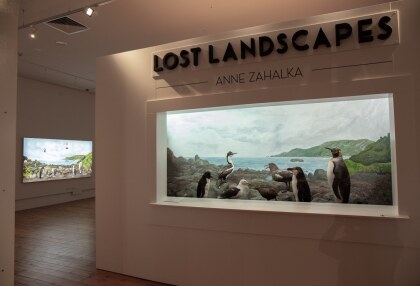
No Comments